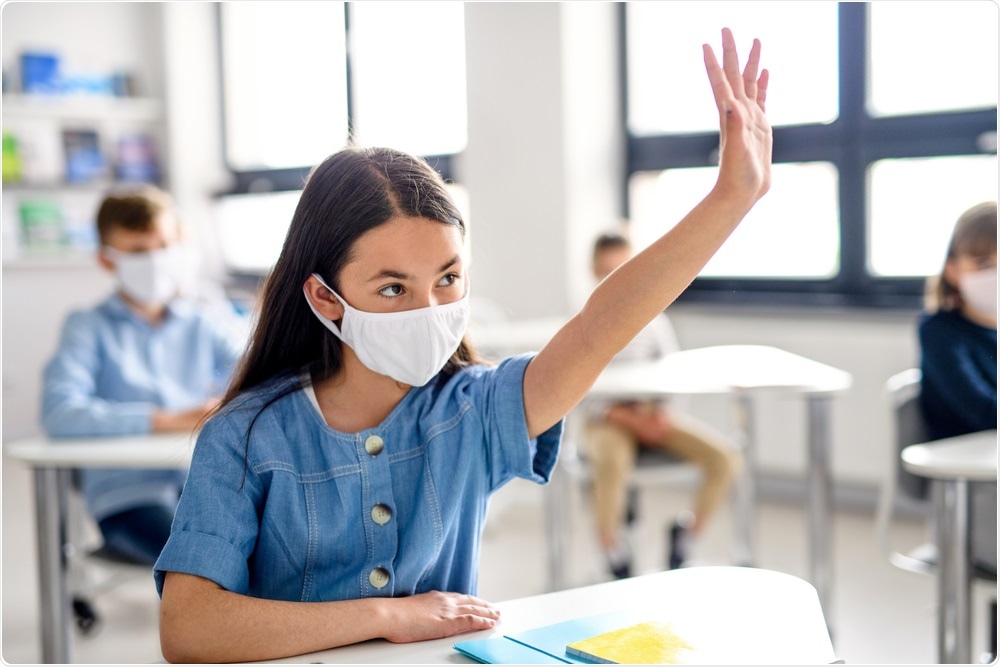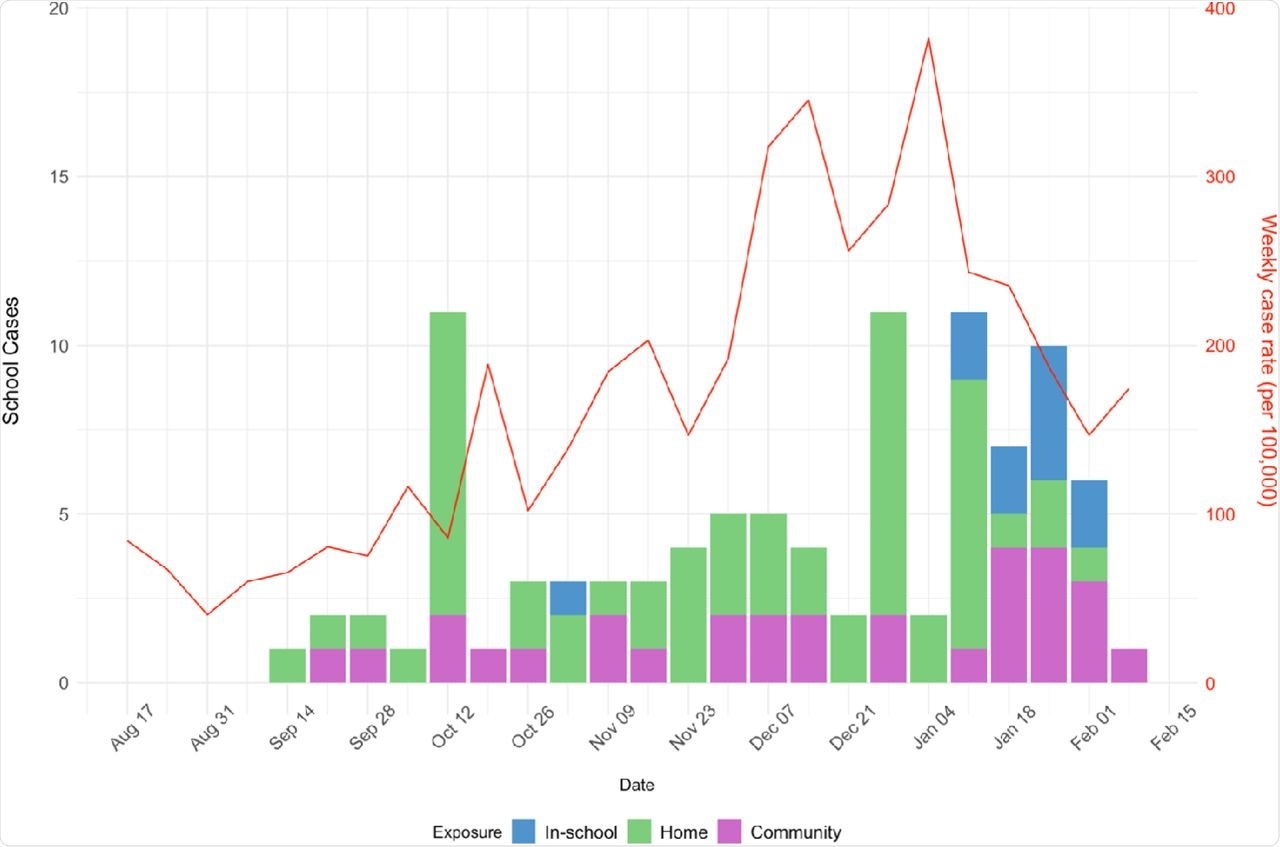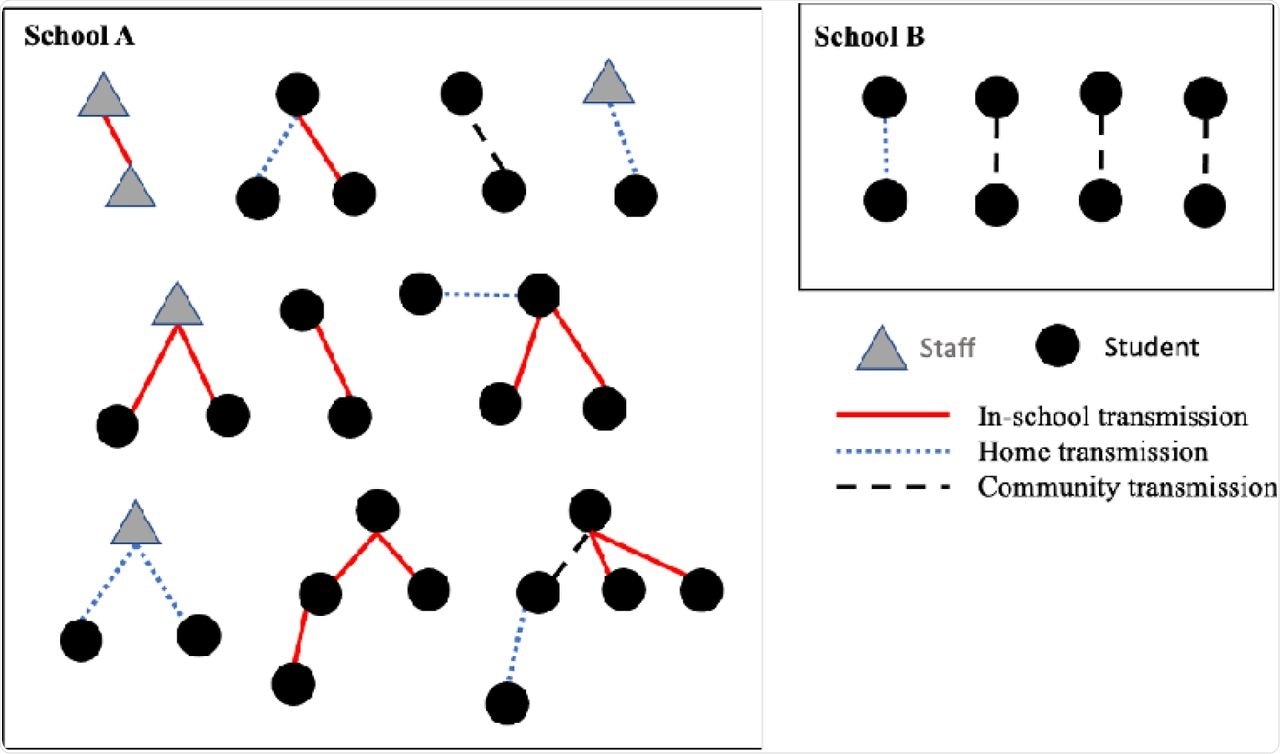The rapid outbreak of the severe acute respiratory syndrome coronavirus 2 (SARS-CoV-2) has led to the coronavirus disease 2019 (COVID-19) pandemic, which has massively impacted school operations worldwide. In the United States, many K-12 schools have resorted to online teaching or have remained open with various mitigation strategies in place.
 Study: Minimal in-school SARS-CoV-2 transmission with strict mitigation protocols at two independent schools in Nashville, TN. Image Credit: Halfpoint / Shutterstock.com
Study: Minimal in-school SARS-CoV-2 transmission with strict mitigation protocols at two independent schools in Nashville, TN. Image Credit: Halfpoint / Shutterstock.com

 *Important notice: medRxiv publishes preliminary scientific reports that are not peer-reviewed and, therefore, should not be regarded as conclusive, guide clinical practice/health-related behavior, or treated as established information.
*Important notice: medRxiv publishes preliminary scientific reports that are not peer-reviewed and, therefore, should not be regarded as conclusive, guide clinical practice/health-related behavior, or treated as established information.
Background
Research has shown that children are less likely to become symptomatic or have more severe clinical COVID-19 outcomes than adults. Prior to the vaccination campaign in the U.S., 10% of all cases and 0.1% of all deaths were among children and adolescents aged 5 through 17 years. However, as vaccination rates have increased among adults, children may now account for a larger fraction of cases and deaths.
Some previous studies have found no significant relationship to exist between in-person learning or school re-openings and community transmission, especially when strict mitigation measures are in place. However, other studies have shown that transmission may be more common among children in school environments than in community settings.
Overall, there remains uncertainty about how to safely operate schools. In the current study, scientists have described the distribution and characteristics of COVID-19 cases at two independent schools in Nashville, which remained open during the 2020-2021 school year with strict mitigation measures in place.
About the study
Data were collected from two independent schools in Nashville, where school A included students in Kindergarten through 12th grade and School B included students in pre-Kindergarten through 8th grade. School A staggered its in-person opening by grade level, whereas School B began for all students on the same day. During these periods, all suspected and known cases of COVID-19, including students and staff, were reported to the school health team.
Each school implemented strict mitigation measures throughout the study period, such as daily symptom and exposure screening, physical distancing, strict hand hygiene, and universal masking of all ages at all times. Students were categorized into three groups: lower school (Kindergarten through 4th grades), middle school (5th through 8th grades), and high school (9th through 12th grades).
Study results
The scientists documented that most COVID-19 cases among school-aged children, with strict mitigation measures and quarantine protocols, were not due to in-school transmission. This is consistent with other studies that found that student-to-teacher transmission is rare.
Specifically, a recent study showed that in-person schooling was associated with higher COVID-19 rates among household members; however, that the risk was no longer significant when effective mitigation measures were used in schools. In the schools considered in this study, the most important mitigation measures to reduce risk were daily symptom screening and mask mandates. Contrary to a previous report, the results did not support a strong association between cases reported to school settings and local transmission rates.
The researchers also highlighted the fact that many students were quarantined, corresponding to a high number of missed in-person school days during the study period. This was surprising, despite the minimal in-school transmission risk, with mitigation measures in place.
 Number of cases of COVID-19 at School A and School B (left y-axis) by week (x-axis) and exposure setting (color), compared to weekly case rate of COVID-19 among school-aged children in Davidson County (right y-axis) from August 18, 2020 through February 12, 2021.
Number of cases of COVID-19 at School A and School B (left y-axis) by week (x-axis) and exposure setting (color), compared to weekly case rate of COVID-19 among school-aged children in Davidson County (right y-axis) from August 18, 2020 through February 12, 2021.
One reason why more research is not being published is due to the lack of data on appropriate quarantine strategies and how to define close contacts aside from Centers for Disease Control and Prevention (CDC) guidelines.
The cumulative incidence of COVID-19 at both schools during the study period was slightly higher than reported in children in the entire county. It has been widely reported that population-based COVID-19 surveillance underestimates SARS-CoV-2 infection rates.
 Diagram of case clusters among students and staff at School A and School B, including transmission route.
Diagram of case clusters among students and staff at School A and School B, including transmission route.
In this study, students were asked to get tested following suspected exposure or when they exhibited COVID-like symptoms. This strategy likely improved the SARS-CoV-2 infection data. It should, however, be considered that students and families who were included in the study population represent a demographic that is more probable to access testing.
Limitations
Detailed data were collected at each school throughout the year; however, the final data were not validated until the time of this analysis, which means that some cases may have gone undiagnosed or unreported. Second, the data used as the control group may not have reflected the distribution of school-aged children in Tennessee.
Also, the data were collected prior to the widespread rollout of COVID-19 vaccinations and when there were limited local data on variants of concern.
Conclusion
The findings of the current study showed that SARS-CoV-2 transmission in schools was limited when strict mitigation measures were used. The results also suggested that quarantining following in-school exposure to infection may be unnecessary, even if strict mitigation measures are in place.

 *Important notice: medRxiv publishes preliminary scientific reports that are not peer-reviewed and, therefore, should not be regarded as conclusive, guide clinical practice/health-related behavior, or treated as established information.
*Important notice: medRxiv publishes preliminary scientific reports that are not peer-reviewed and, therefore, should not be regarded as conclusive, guide clinical practice/health-related behavior, or treated as established information.
Journal reference:
- Preliminary scientific report.
Peetluk, S. L., Rebeiro, P. F., Edwards, K. M., et al. (2021) Minimal in-school SARS-CoV-2 transmission with strict mitigation protocols at two independent schools in Nashville, TN. medRxiv. doi:10.1101/2021.11.09.21266140